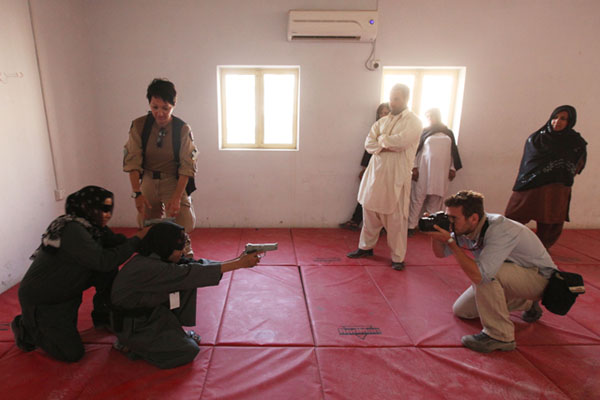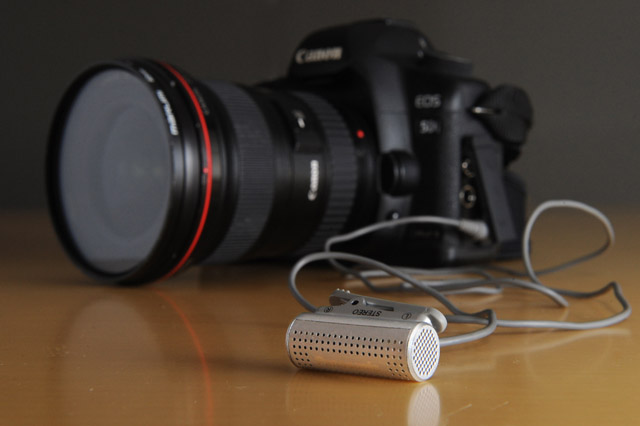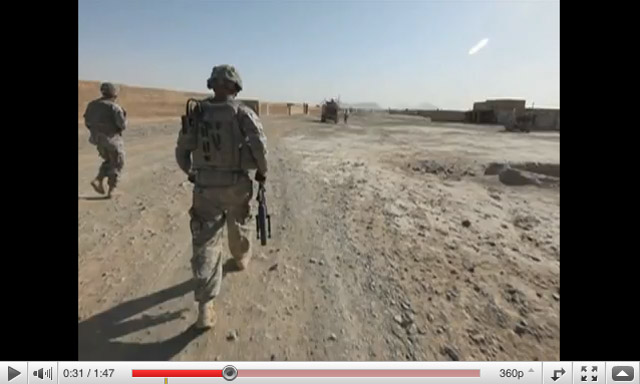Afghanistan’s female footballers from Ed Jones on Vimeo.
“Is this normal?” I strained to ask the US soldier opposite me, as the military transport aircraft violently pitched and rolled in the skies above Kabul, picking its way between the mountains.
I was returning to the Afghan capital following a two week embed with US forces in the country’s troubled southern city of Kandahar; a trip originally intended to coincide with a NATO offensive aimed at pushing the Taliban from their spiritual home.
Now – with just over a week to spent at the AFP bureau in Kabul, I was keen to find a video opportunity which didn’t feature soldiers, weapons, or the bleak colours of desert camouflage.
It’s not compulsory for AFP photographers to shoot video, but it’s something that I enjoy – and find myself doing more and more; not just short segments of news footage, but also fully-voiced features.
A colleague had arranged a chance to visit the Afghan national under-18 women’s football team during training, and with the World Cup under way it seemed the ideal time to attempt a short video report on the team.
It was a particularly hot afternoon as we made our way to the football ground, past hastily fortified police checkpoints and through the flour-like dust thrown into the air by the slightest breeze or vehicle – of which there were many, vying for passage along streets laced with razor-wire.
Arriving at the sports ground on the fringes of the NATO headquarters in Kabul after a short but dehydrating walk felt like discovering a desert oasis: but in this case it was a quiet, verdant, field disrupted only by the distant patter of gentle competition and flecked with red tracksuits; a colour in harmony with the expanses of blue and green that lay above and below.
The girls, thoroughly enjoying themselves, were a poignant sight as one group took part in an informal game while another practiced shooting goals. I immediately set to work — there wasn’t long to shoot, and I wanted to catch the action while it lasted.

I had two Canon 5DmkII’s with me, a 16-35L 2.8, and a 70-200 F4L IS which I had bought before my trip instead of the far heavier f2.8 version: I find the weight and image stabilizer on the lighter lens ideal for video, though I didn’t realise at the time that the sound of the stabilizer was picked up by the camera’s internal mic. Although it was not particularly loud, I could have been done without it.
I had gathered a good selection of action sequences and was framing up a long shot when, without warning, two US Blackhawk helicopters roared overhead, descending on the pitch and scattering its occupants.
I had been shooting with the wide lens looking upwards, when a man appeared behind me and bizarrely grabbed my tripod mounted with one of the 5DmkII’s. I chased after him but he couldn’t hear me over the thunderous sound of the choppers getting ever closer, and carried on running away with my gear to the side of the pitch.
“No photo, no photo!” yelled the unidentified Afghan man as I frustratedly re-acquired the camera and tripod. I thrust my ISAF media badge at him, showing I was cleared to photograph the area, but he persisted with his slogan, so I changed position to continue shooting.
After landing for no explicable purpose, the helicopters promptly lurched back into the sky leaving the bemused footballers to regroup – and having suppressed my false sense of security.
I thought about using this as the centrepiece to the video, but when it came to editing I found a more endearing angle in the lighthearted narrative surrounding the observations of my interviewee – and I hope that viewers can relate to her comments, which show a down-to-earth, ordinary girl, but touch on the struggle faced by women in Afghanistan.
Many of the players were understandably reluctant to speak for the camera, and so I used just one subject for my sound bites. To record the sound I used a cheap Panasonic stereo lapel microphone plugged directly into the camera, its one-metre cable limiting my lens choice to the 16-35 2.8L on a tripod.
The microphone, which I had picked up in New Delhi on my way to Afghanistan, works brilliantly and was extremely useful when, during the embed, I had been able to very quickly clip it on to soldiers either for interviews, or for on-the-spot briefs during operations.


I edited the footage upon return to Hong Kong, where I wrote a script and spent many, many hours behind the microphone trying to get a good take: we all hate the sound of our own voice, right?
The result is extremely simple, short, and hopefully snappy enough to be ingested by viewers easily. Creating pace and rhythm to my videos is something I am keen to master – and I’m extremely fortunate to have the AFP TV department on hand to help me achieve this by refining my scripts and offering objective advice when I edit my footage.
The feature is not particularly creatively shot, because with all the time constraints I usually face during filming, the confidence to try a different approach has to come with more experience – much like it did when I first began taking photos.
Included in the final edit are a couple of shots by Asrar Ghani, an AFP TV cameraman based in Kabul, of general street scenes: shots I had overlooked but should have remembered to get. But Asrar’s footage is great, and gives context to the finished video.
During my time in Afghanistan, myself and an AFP reporter visited policewomen and female students in Kandahar, and heard first hand of the inspirational determination of the country’s women to overcome years of repression.
My video of footballing females will never be a game-changer in illuminating this struggle, but with any luck it will offer a tiny, but uplifting, glimpse of progress.
Ed Jones is a staff photographer with AFP.






